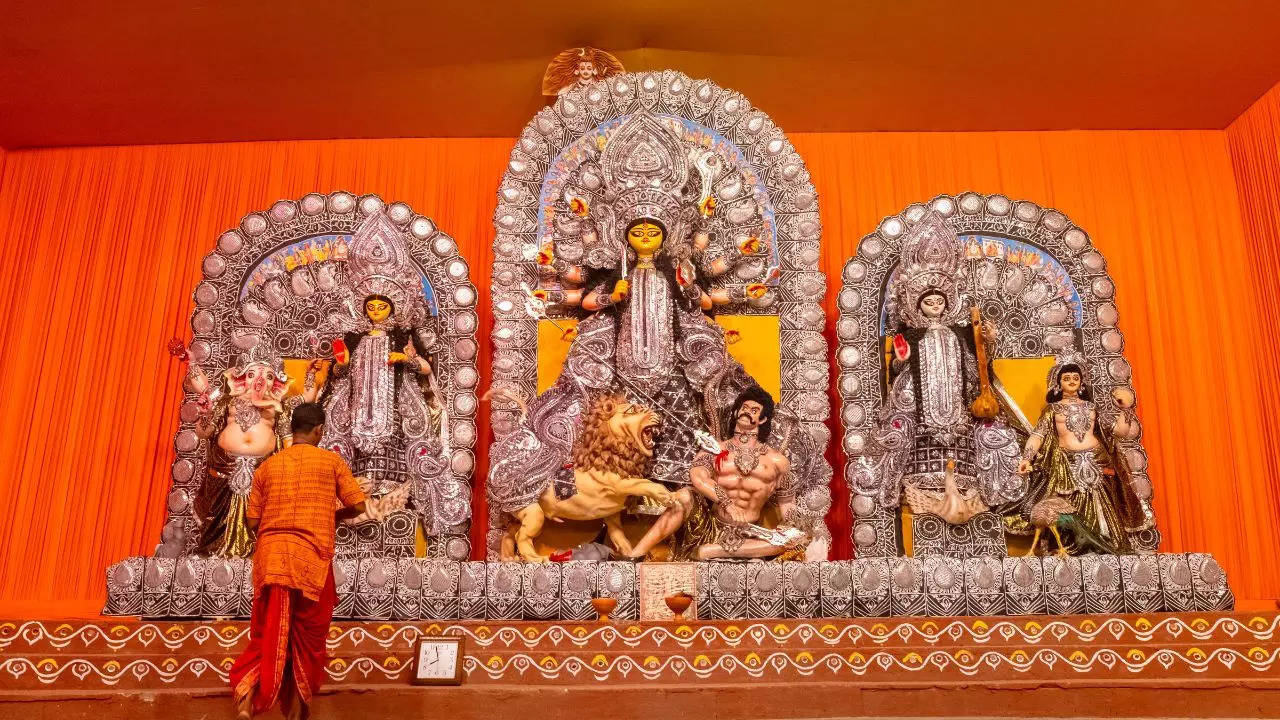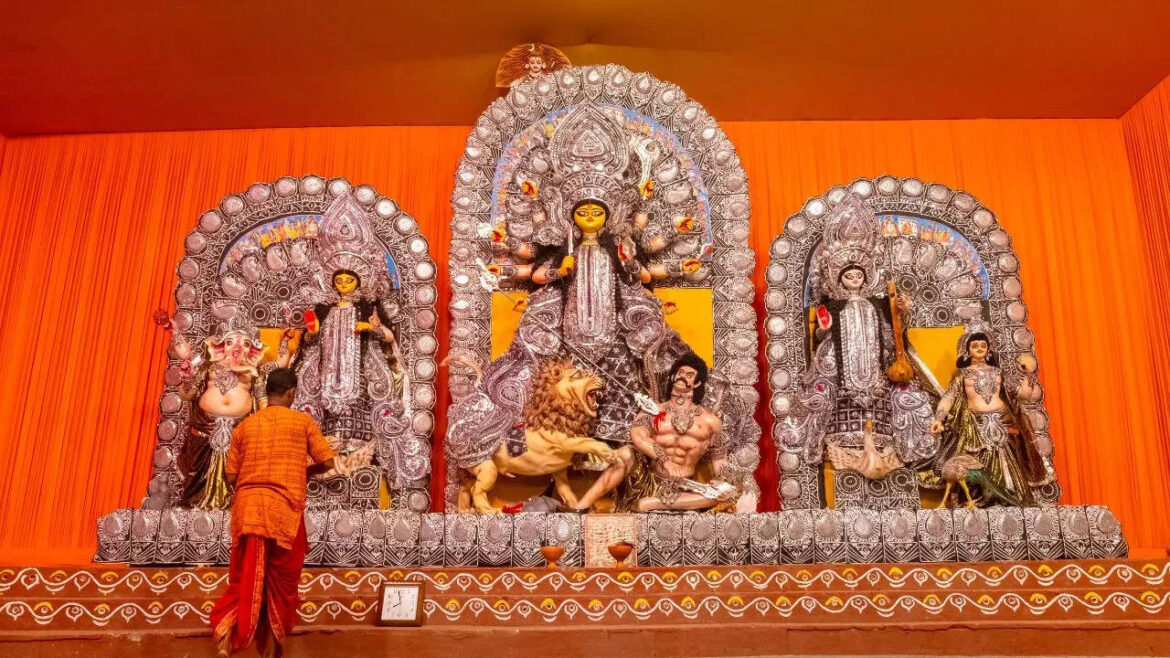Table of Contents

As Durga Puja approaches, the palatial mansions of Kolkata's old aristocratic families transform into vibrant hubs of celebration, each with a unique history and charm. In a city fast evolving with time, these timeless venues are a must-visit during the festivities to soak in the innate charm of Uma’s homecoming.
Sabarna Roy Choudhury Family
Location: Barisha, South Kolkata
Significance: The oldest Durga Puja in the city
Among the must-visit households is the Sabarna Roy Choudhury Family in Barisha, which hosts the oldest Durga Puja in the city, dating back to 1610. This family played a significant role in the establishment of Calcutta, and their beautifully adorned ‘thakur dalan’ is framed by graceful columns.
Raja Nabakrishna Deb Family
Location: Sovabazar Rajbari, North Kolkata
Significance: Known for its unique history of including the first instance of non-Hindus witnessing a Hindu household celebration in 1757.
The Raja Nabakrishna Deb Family at Sovabazar Rajbari in North Kolkata features a lion with a horse's face and a fascinating evolution of ritual sacrifices.
Radha Gobinda Mallick Family
Location: Bhawanipore, South Kolkata
Significance: Established in 1860, this family has a modern connection through local film stars.
This household Durga Puja has gained popularity thanks to the renowned father-daughter film star duo, Ranjit and Koel Mallick.
Rani Rashmoni Family
Location: Janbazar, Central Kolkata
Significance: Founded by the legendary Rani Rashmoni, known for establishing the Dakshineswar Kali Temple.
After her passing, the Pujo was carried on by the families of her daughters. Now divided into two parts, the Durga Puja accessible through the Free School Street entrance was initiated by the Rani herself.
Badan Chandra Roy Family
Location: Colootola, Central Kolkata
Significance: One of the best-preserved residences, with a history tied to local medical establishments.
In Colootola, the Badan Chandra Roy Family showcases a 166-year-old Pujo in one of the best-preserved residences, where symbolic fruit sacrifices are made in a grand arched ‘thakur dalan.’
Purnendu Chandra Dhar Family
Location: Near Badan Chandra Roy’s home
Significance: The Pujo has a unique twist, worshipping Maa Durga in her Abhaya Ma form.
The Purnendu Chandra Dhar Family celebrates a distinctive form of Maa Durga worship, depicting her as Abhaya Ma with two hands, surrounded by her children.
Khelat Ghosh Family
Location: Pathuriaghata, North Kolkata
Significance: Home to one of the grandest ‘thakur dalans’ in the city.
The Khelat Ghosh Family in Pathuriaghata boasts one of the grandest ‘thakur dalans’ in the city, The impressive marble corridor stretches over 80 feet, leading to the grand dancing hall, now known as the Khelat Ghosh Memorial Hall. Here, the ablution of the Naba Patrika, or nine leaves, is performed on-site. Additionally, there’s a cherished tradition of offering homemade sweets to Maa during the celebrations.
Shibkrishna Daw Family
Location: Jorasanko, North Kolkata
Significance: Started in 1840 and known for its glamorous celebrations.
The household Pujo began in 1840, initiated by Shibkrishna Daw’s father, but it was Shibkrishna, a successful businessman, who later infused the celebration with glitz and glamour. Visitors flock to admire the glamorous celebrations and intricately adorned idols.
Also Read: Iconic Durga Puja Pandals of 2024: A Journey Through Art, Culture, and Devotion
Chandra Family
Location: Jorasanko
Significance: Established by Subal Chand Chandra in 1761, the tradition has continued with unique rituals.
Here Goddess Durga is seen sitting on Lord Shiva’s lap in a reassuring pose. Subal Chand Chandra began Durga Puja at his Jorasanko home way back in 1761.
Bhukailash Rajbari
Location: Khidirpur, Western Kolkata
Significance: With a history spanning 300 years, this household is known for its unique Shiva temples.
This traditional household is primarily recognised for its twin Shiva temples, constructed in 1781. One of the Shiva-lingams stands at 15 feet tall, while the other measures 12 feet. However, they do not worship the typical clay idol and instead have an asta-dhatu idol.

